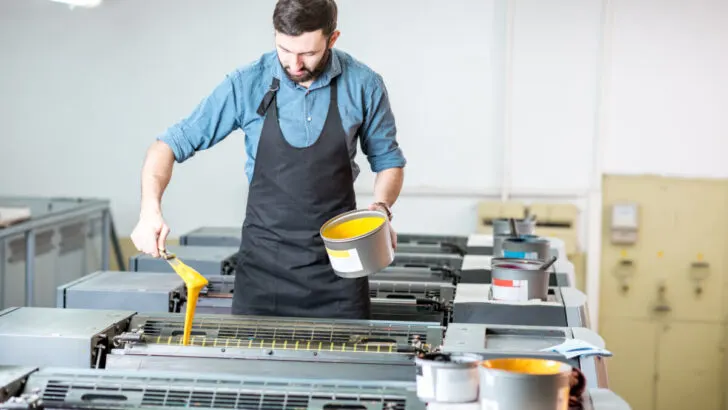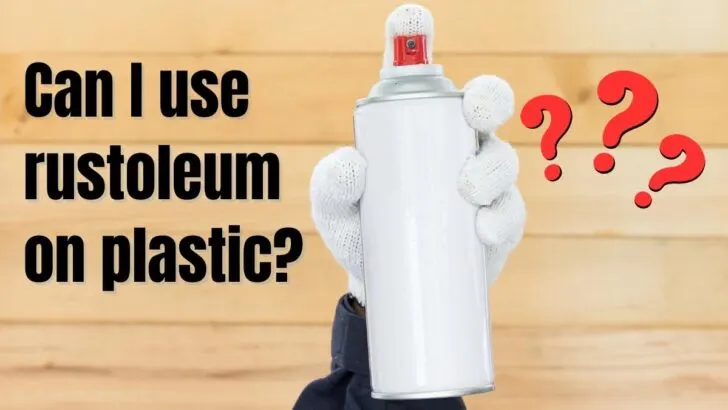Painting is often the simplest method to give your plastic furniture a makeover, whether it has lost its shine after spending a season outside or if you want to revive an old plastic item.
However, plastic is a non-porous material, making it more difficult to refinish and paint than porous materials like wood. Thus, the majority of paints don’t adhere to plastic well, which either causes discolorations or causes the paint to just peel or split off the plastic within a short period of time. This may make one wonder if Rust-Oleum provides paints that can be used on plastics.
Rust-Oleum paint for plastic will typically adhere to all forms of plastic with the exception of polyethylene. For this kind of paint, there is no need to apply primer first or sand the surface.
Rust-Oleum is a company that manufactures various paints for multiple surfaces. Most paints made for other purposes can also be used on plastics. While painting is a quick method to update plastic, there are some crucial actions you’ll need to do to stop chipping and make sure your efforts are worthwhile.
Will Regular Rust-Oleum Stick To Plastic?
Regular general-purpose paints from Rust-Oleum will stick on plastics but will require some preparation and cleaning of the plastic surface before painting.
However, both plastics for indoor and outdoor use can be easily refreshed using Rust-Oleum plastic speciality paint. This paint is specially made to be used on plastics and hence requires no primer.
Additionally, these are effective on polypropylene, PVC, resin, fibreglass, polystyrene, and vinyl plastics used in planters, tables, and chairs.
Can You Use Rust-Oleum For Metal To Plastic?
Plastic can be painted using Rust-Oleum’s enamel paint for metals. But, employing the spray version will be much more efficient than using a brush. Enamel paints from Rust-Oleum are designed to be long-lasting and corrosion-resistant. It is suitable for usage both inside and outside. This long-lasting paint has a glossy white finish.
Additionally, because this enamel is adaptable, it may be used on a variety of surfaces, including stone, wood, and concrete.
Keep in mind to look for phrases like plastic or multi-surface on the label of the paints. This is because such paints have no issues adhering to plastics. However, some paints may have some issues adhering to other materials, such as wood.
In this case, use an equalizer, which is nothing more than paint primer, to remedy this issue. This primer aids in avoiding the flaking, peeling, and chipping that can spoil your painting job.
What Kind Of Paint Will Stick To Plastic?
Plastic has a long history of being considered difficult to paint. When dry, the paint readily peels off and has a tendency to leak, puddle, and splotch. However, paint companies have created specialized spray paints that apply more smoothly and resist flaking than regular paint.
When painting plastics, it is always advised to select paints that are primarily designed to adhere to plastics. There are specific paints made for plastic, such as Rust-Oleum speciality paint. However, apply primer first if you plan to use standard spray paint.

Plastics can be painted with the majority of general-purpose spray paints, but care must be given to properly prepare the surface. General-purpose spray paint, such as Rust-Oleum Universal Spray Paint or Krylon Paint + Primer, offers more color options than plastic-specific paints.
Although the product specs normally say that they will work on plastic, these general-purpose paints are not clearly labelled as being compatible with the material.
How Do You Paint Plastic Using Rust-Oleum?
You will need a few supplies first, including:
- Sanding block (fine grit)
- Mineral spirits
- Plastic primer
- Top coat paint
- Clear sealer
Step 1
Firstly, start by using rubbing alcohol to clean the plastic’s surface. In addition to cleaning it, this helps to remove any sealants that are applied to your brand-new item. Next, wash the item with a damp cloth and let it air dry.
Step 2
Lightly scrape the surface to a dull finish using a fine-grit sanding block. This will add some texture, enabling the primer to adhere. After sanding, use a dry brush to remove dust from the surface and then wipe it off with a damp towel to remove any remaining dust. Lastly, let your item thoroughly dry.
Step 3
In accordance with the instructions on the can’s back, apply the plastic primer. Instead of one thick layer or several applications, Rust-Oleum advises applying one thin coat and moving the can as you spray. However, if you’re painting furniture or other durable items, spray roughly 3 to 4 coats, letting each one dry in between.
Step 4
If you’re making a color-block design, tape the pattern in place and cover unwanted areas with plastic so the first color won’t get on them. Paint your first color. After letting this dry fully, cover it and spray-paint the second color. Keep going on until your design is finished.
Step 5
Last but not least, prime the entire object with clear spray paint to preserve the paint. For furniture or other items that will be stored outside and are exposed to the weather, this step is very crucial.
Can You Paint Plastics With A Brush Paint?
Although spray paint adheres to plastics the best, you can also use a brush if necessary. This is because Rust-Oleum provides plastic-specific paints and primers in quart-size cans.
One example is Rust-Oleum Specialty Paint For Plastic Spray. The only difference between this formulation and the spray-on variants is the distribution method.
However, plastics can develop brush marks or smears after being painted. As a result, spray paint usually results in a smoother, drip-free surface that poses little risk of brush marks. It could also be advisable to use spray paint if the object you are painting is smaller than 25 square feet.
Final Words on Using Rust-Oleum on Plastic
To sum it up, plastics can be painted with regular general-purpose paints, enamel paints, and specialized plastic paints. Rust-Oleum paint for plastic will also do the trick. You do need to sand the plastic surface prior to painting so that the paints adhere well to the surface. Further in all these types of paints, spraying these paints work better than brushing.


